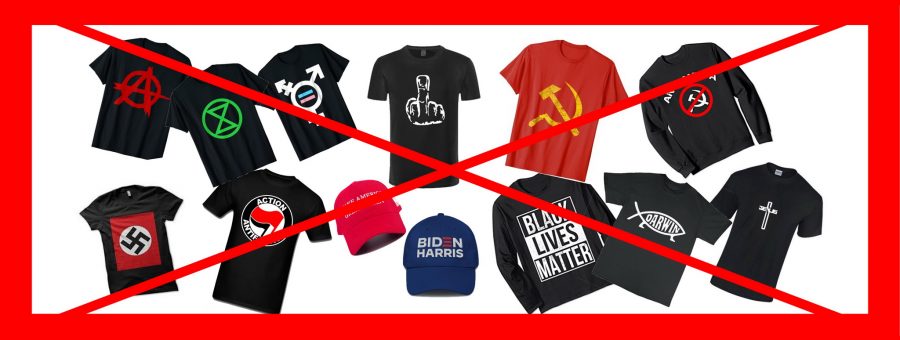Are School Uniforms Good or Bad? Revisited!

Shôn Ellerton, April 30, 2021
In our age of ultra-sensitivity and seemingly diminished tolerance, I revisit the issue of whether school uniforms are good or bad.
Back in 2019, I wrote an article entitled, Are School Uniforms Good or Bad, in which I formulated an opinion on the pros and cons of enforcing the use of school uniforms. The conclusion I arrived at was more biased towards not making it a requirement to wear school uniforms. My general thoughts were that the wearing of school uniforms stymied creativity, opposed individuality and for some, being an uncomfortable daily ordeal. However, I have given further thought to what I wrote in consideration of a change of personal and general circumstances as I will attempt to elucidate.
Oddly enough, the trigger that got me re-thinking this came from listening to an interesting US Supreme Court case between a cheerleader who got punished by the school by suspending her from varsity activities for a year because she ‘dissed’ one of her coaches on the Snapchat social media platform after not being accepted into the varsity squad of a cheerleading team. The live recording of the Supreme Court case is on a YouTube link from PBS which can be found here. One might think it extraordinary how such a seemingly minor case can arrive at the Supreme Court level, but the arguments presented here transcend to the overall issue of what are the accepted boundaries of free speech and how they are applied to those off school grounds or campuses and, in general, public spaces.
During the Supreme Court hearings, a section was devoted to highlighting the differences of what constitutes something offensive been said or displayed is genuinely harmful or not. For example, would a person find it difficult to function normally in whatever act that person was involved or doing as a result of being offended or not? Would the display of offence instigate violence or disturbance? For example, most would agree that spreading the doctrines of fascism that were upheld in Mussolini’s Italy or Hitler’s Germany would be considered an incitement to disturbance, thereby crossing the boundary of what is accepted as ‘free speech’. However, as repugnant as it is, as this had happened to me during my own schooldays, calling someone fat in school is not going to create civil unrest or a disturbance, and therefore qualifies to be within the boundaries of ‘free speech’. As for the student in the case above where she planted the F-bomb numerous times on Snapchat about her coach and school, I would assume that the majority would view this as practically normal behaviour for a 14-year to express. As for the coach and principal of the school, I expect better and earnestly hope that they develop thicker skins rather than being the delicate snowflakes that they are. To play a little hyperbole here, we are not dealing with a disenfranchised adult like Aum Shinrikyo who was denied entry into Tokyo University and denied being elected a politician and then being so embittered, he decided to launch sarin gas attacks on the Tokyo Metro during the 90s!
Returning to the court arguments, examples were cited in the hearings such as what can be displayed on one’s clothing in school. From my own schooldays in Colorado, there was no uniform code except that clothes had to be clean with no obscene language, raised middle fingers or crude pictures of private parts on them. Looking back on those days, I recall many students in high school who displayed an array of political, religious and other significant symbols on their clothing. They included the nuclear disarmament peace sign, Confederate flags, Holy Crosses, hammer and sickles, black-A anarchy symbols, and many others. Boundaries were crossed when the occasional Swastika made its way in as well but not many did and those who did were severely frowned upon and encouraged to wear something a little less controversial. This extended, of course to hair styles and general appearance. For example, skinheads and goths have their own subculture which they display openly to others and usually as a proud reflection of their standing rather than aiming to offend. Incidentally, one of the biggest myths portrayed is that skinheads represent the fascists. Throughout 20th century history to the present, fascists and anti-fascists have both often adopted the skinhead style, for example, look no further than the ARA (Anti-Racist Action) Minneapolis Baldies who set up shop in 1987. Further reference can be found in Mark Bray’s comprehensive and surprisingly objective and informative book, Antifa: The Anti-Fascist Handbook.
However, I think times have changed and tolerance has all but died in the era of the ultra-sensitive snowflake and the widespread conflagration of social media. I, for one, enjoyed mingling with so many different types of people back in school and often asked questions what that badge symbolises or why do you wear dreadlocks, or why dress in that colour and so on. I even struck up a conversation with someone wearing a Swastika out of curiosity. I knew from childhood about the atrocities committed by the Nazis, but I was genuinely curious what made his brain tick and why he wanted to identify himself as being a Nazi. Equally so, speaking with an anarchist dismissed my gross misperception that all anarchists want to do is cause chaos. I could not be more wrong. The only group I didn’t really get along with were the ‘jocks’, the ones who wore those varsity jackets and all look that they have been airbrushed from a magazine and have families who have every intention in getting them into an Ivy League school. I made further reference to this in an earlier article entitled My Childhood Obsession With Communism, in which the main subject of discourse with the ‘jock’ types was sports and girls. Unfortunately, in today’s world; at least, in the more affluent first-world countries like the United States, western Europe, Australia and Canada, the tendency in general is to strike first. Whether this is achieved through doxing, physical violence or being cancelled, the art of wanting to gain knowledge by discussion and mutual feedback seems to play second fiddle. We have reduced our tolerance levels to the extent that even wearing one’s country’s flags on a shirt can display offence to others.
The Supreme Court case further mentions those students in schools or college campuses that might wear insignia and logos from BLM, Antifa, Proud Boys, and MAGA. It is undoubtedly the case, that this kind of display of symbolism is deeply political and potentially incredibly divisive. The same, of course, applies to symbols of religion, particularly within those countries where tolerance of other religions is unacceptable, even punishable if practiced. My personal preference would be for more discussion, transparency and openness, but I deeply feel that, collectively, we are not able to cope with being tolerant to others in general. Perhaps we never will.
This brings me back to the point of uniforms in school and weighing in whether they are a good thing or a bad thing. Having a son who now wears a school uniform, it does make life simpler in knowing how to dress him, and it is reassuring to know that he takes pride in his uniform. However, I am aware that some children really do not feel comfortable in a uniform and I can relate to this as well. As mentioned earlier, I liked the variety of how others dressed and how they exhibited their individual personas but wearing a uniform does bring everyone to the same level, in a good way. Although, there is a myth which is in perpetuality that wearing school uniforms prevents those who are more affluent from showing off. Children know who they are, uniformed or not!
Ultimately, not only do school uniforms assist to discourage divisive subjects of discourse like politics and religion or to prohibit the display of obscenities that may grossly offend others, they are designed to bring a sense of togetherness (I purposely avoid the word, solidarity) and to show a sense of pride in the school the students attend. Of course, there is the ease of knowing what clothes to choose and not having to worry about what others will wear or how others will perceive one based on their dress sense. There are always outliers of course, but, in general, it seems to work consistently well in the world of school education.


